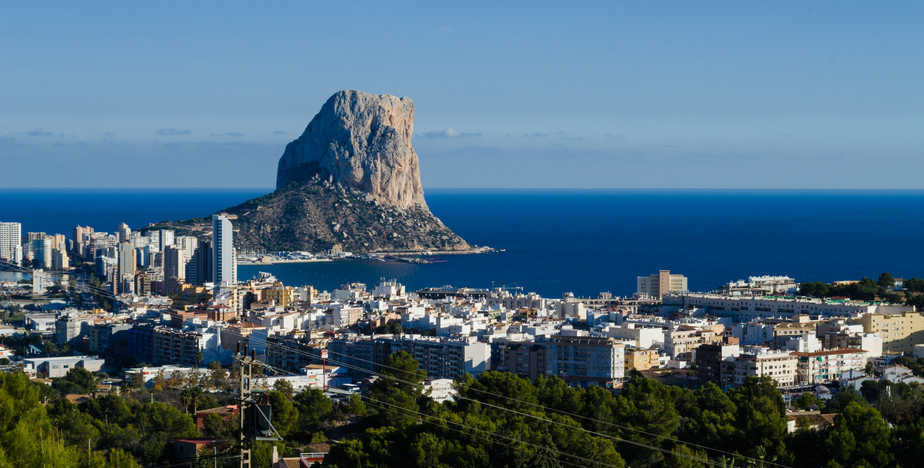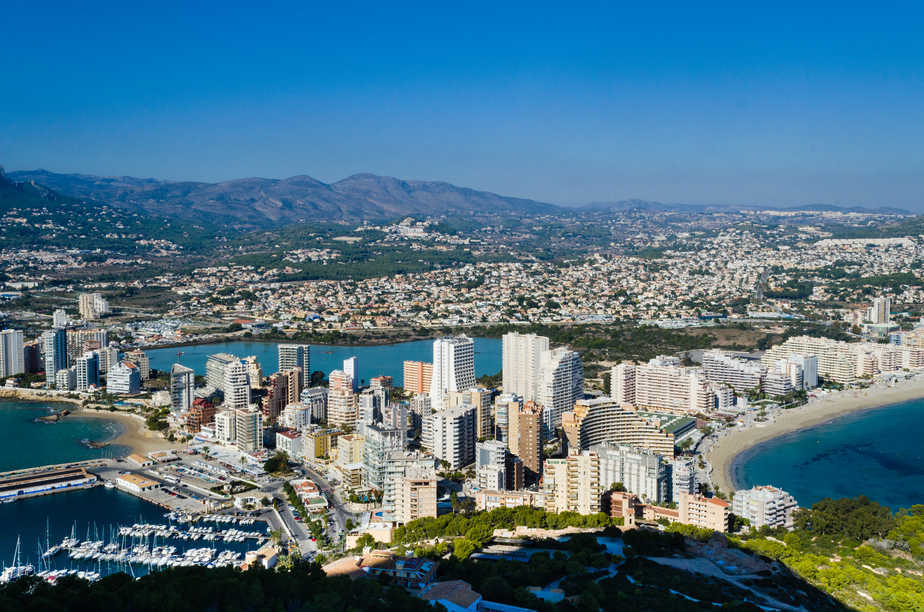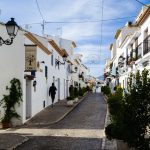If you are now looking for a destination where you can spend this winter with yours and you still don’t have any idea where to go, do not worry as in this article, I will introduce you to a sun shining city and share with you my own experience. I will also include one of the things that can be done here.
Before I tell you why Costa Blanca, the southeastern coast of Spain, let me first introduce you this magnificent town. Calpe is a Spanish city located in the province of Alicante. The city is well known for its wonderful 13 kilometers Mediterranean coastline with 14 beaches and its great modern Spanish architecture. It has around 3,180 hours of sunshine, an average annual temperature of 18 degrees and only 44 cloudy days during the year.
Table of Contents
Why Calpe, Spanish Mediterranean coast?
Back to the reasons why I choose Calpe. Because of a lot of work, I do not have enough free days to travel very far, so I was thinking to travel to Side in Turkey or Sri Lanka. I have chosen Side for the reasons that I have always a good contact with Turkish people and it was the cheapest offer I could find. After a quick research about this area, I decided not to go there because of the bad weather and also not to Sri Lanka as I don’t have enough time. The next day at work, I talked about traveling as we always do with my colleges. One of them says: “why not follow the sun to Costa del Sol”
Later on, I talked with my travel buddy about lovely Spain which I once visited, exactly Granada. He did his research and agreed to travel with me to the Costa Blanca by car. Easily, like magic, we find a beautiful affordable villa in Calpe with a big pool and 3 bedrooms.
First Impression
After a long travel by car from Ghent, Belgium (around 1800 km) to Calpe, I was surprised by the beauty of its beautiful cliffs, palm trees, golden sand beaches and their clean waters, which are an unmistakable turquoise.
Things to Do in Calpe area
The area has a lot of things to offer but I’m not going to discuss all that in one article. The first thing I did after I rested was hiking in the Natural Park of Penyal d’Ifac. In my next post, I will write about more things that one can do.

The Peñón de Ifach, a symbol of the Costa Blanca, is one of the most visited nature parks in the Valencian Community, and meeting point for mountains climbers and hikers.
Natural Park of Penyal d’Ifac
Parc Natural del Penyal d’Ifac or in English: Natural Park of Penyal d’Ifac is a protected site, situated in Calpe. The rock rises 332m above the sea and is a kilometer long. It is home to over 300 species plants, seabirds and 80 of other varieties of birds. One can easily do a walk there until the end of the tunnel. After you have gone through the tunnel, the path narrows and becomes more complicated on the slope leading to the summit. The higher you climb, the more difficult the path becomes. From the top of the rock, one can enjoy fabulous panoramic views over the Mediterranean Sea.

A view over the city from the Penyal d’Ifac Natural Park
Do’s and Dont’s
- You can enjoy walking with your family and your pet, for your safety and yours ensure that you follow the marked path.
- If you walk with children or you are not wearing proper hiking boots, do not continue beyond the end of the tunnel
- Do not feed the animals. If you have food left over, throw it in the trash.
- The collection of plants and fire is strictly forbidden.
- Do not enter the Park after dusk. Camping is not allowed in any part of this nature reserve.
- Groups of more than 15 people require notification of the Park staff and advance reservation. During the high season, you may have to wait to climb up the main route.
Contact details of the Park:
Parc Natural del Penyal d’Ifac
Tel: 965837596
Fax: 965876033
Website: www.parquesnaturales.gva.es
Beware of the rain!
In the autumn months, there might be sudden heavy rain can fall, after which the river beds flood with water. This phenomenon is called gota fría (Cold drop).
Main Attractions in Calpe, Spain
Background
In this chapter, we will be discussing the various sights and sounds one can indulge in the magnificent town of Calpe. We will briefly touch on the Ruins of Els Banyas De La Reina, the Flooded Salt Pans, the Bird Sanctuary, the Gothic Catholic Church as well as the Tower of La Peca.
Ruins of Els Banyas De La Reina
The Ruins of Els Banyas De La Reina, loosely translated to mean The Queen’s Baths, is a historical archaeological treasure that is in close proximity to the Salt Pans of Calpe. It is a grand Roman palace that consists of 8 spectacular rooms, outfitted with embellished marbling and mosaic artwork. This site was discovered in 1610 and excavated in 1792. This site is rich in history, and visitors are enthralled by the inter-connected pools which once served as attractions for the Romans themselves!
Flooded Salt Pans
The El Saladar Flooded Salt Pans were re-furbished in 1918 and instigated the mass production of sea salt. It is a beautiful sight, and visitors are often surprised by the flamingos which inhabit the area. Visitors are advised to go in the daytime, particularly before sunset to enjoy the breath-taking view of nature’s flora and fauna in a beautiful symbiosis.
Gothic Catholic Church
The Iglesia Vieja is the last remaining vestige of Mudejar-Gothic architecture along the east coast of Spain. This church has an interesting history, as it not only served as a place of religious gathering but was also fortified for defensive purposes. Within it, avid historians and aficionados of art will no doubt be taken away by the panel painting of the great Saints Cosmas, Anthony and Damian.
Tower of La Peca
As one of the most revered structures in Calpe, the Tower of La Peca was constructed for defensive purposes and was a component of an entire 2-walled structure. The 16th and 17th centuries saw repeated pirate raids upon Calpe and instigated the local population to construct these structures for their safety. Luckily for visitors, the wall of Calpe has been restored and even boasts 2 English cannons which were discovered in Calpe itself.
Health Precautions
Visitors to Calpe, Spain are strongly recommended to visit their local physician and obtain the following vaccinations:
- Tetanus
- Rabies
- Hepatitis A
Calpe has a modest temperature range between 11°C and 25°C which is tolerated well by most people. Travelers are encouraged to stay well hydrated on hotter days.
Travelers who are bird-watching should take caution and avoid contact with birds if they have a compromised immune system, or any lung diseases such as Chronic Obstructive Pulmonary Disease, Tuberculosis or Interstitial Lung Disease. This is because some birds harbor a microbe known as Chlamydia Psittaci which can cause serious lung infections in those without competent immune systems.
Calpe on Google Maps
More Things One Can Do in Calpe region:
Join countless satisfied travelers who have experienced Morocco with us. We customize every detail to make your Moroccan adventure uniquely yours. Explore the Magic of Morocco with us!

















